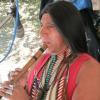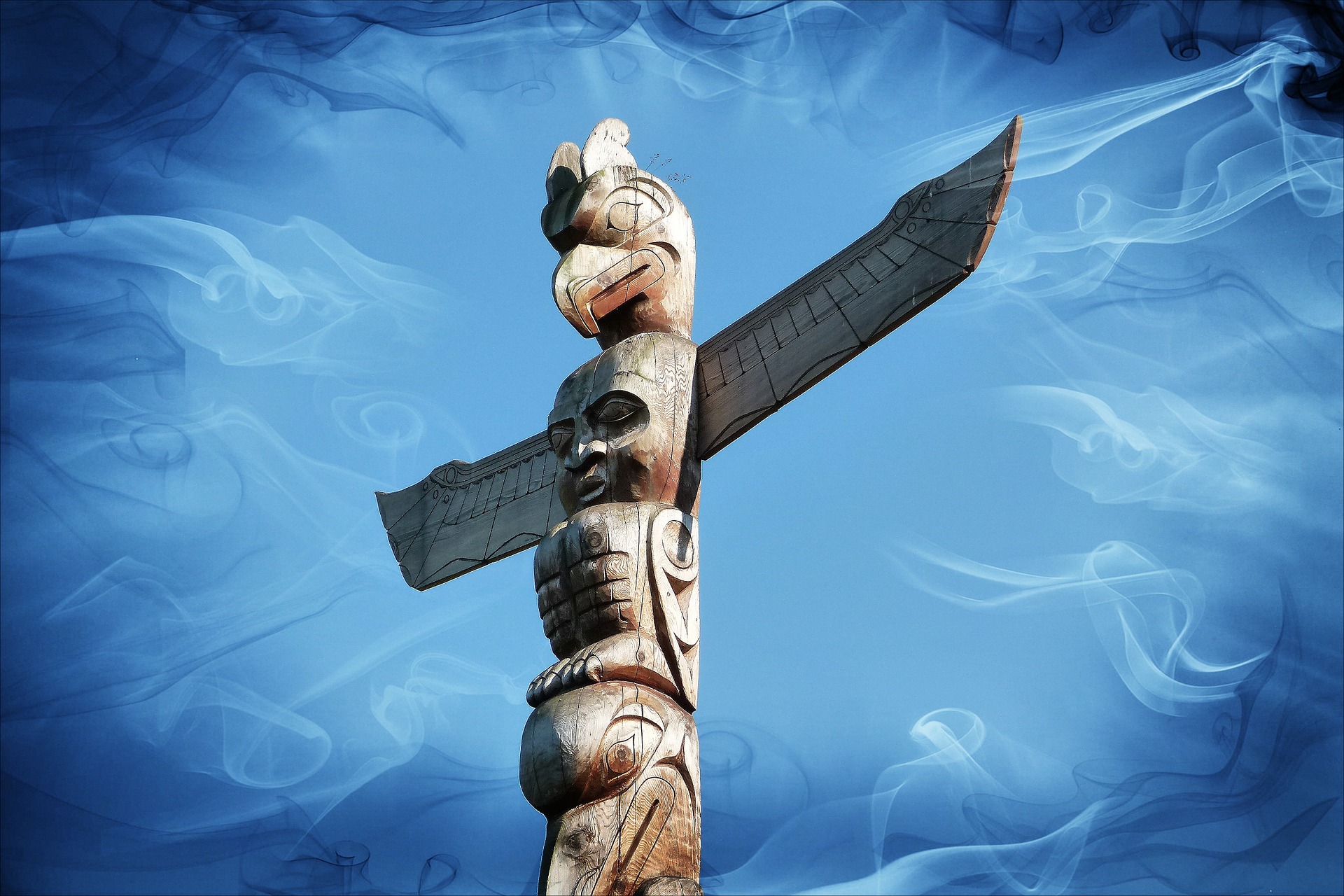 Submitted by Joseph Morningstar on
Submitted by Joseph Morningstar on

pixabay.com
What is the Great Spirit?
The Great Spirit (Wakan Tanka, Gitchi Manitou of Native American cultures) is a beautiful example of a non-theistic belief in an active, personal, non-anthropomorphic Deity that is intertwined with the fabric of the Universe itself on the large scale and yet is personally engaged with the web of living things and the world on an earthly scale. These cultures are not completely homogeneous, and there are a variety of creation mythologies that need not concern us as (in my opinion at least) these cultures have always been aware that their mythologies are myths, that their legends are legends, that their sacred stories are stories, and thus they have avoided the curse of socially enforced orthodoxy or any sort of insistence on ``belief''. The myths themselves are intended and used as teaching stories that guide individual behavior in ways that support the individual and the community, not as metaphysical speculation. These religions also seem to lack the hellfire and damnation meme - the Great Spirit doesn't punish people for being bad, doesn't inflict eternal torment on people for ``not believing in It''. In these cultures, a life out of balance with the Great Spirit, with the earth, with the community is its own punishment. - http://https://www.phy.duke.edu/
Native people DO NOT use the label "Shaman."
Native people do not believe it is ethical to charge money for any ceremony or teaching. Any who charge you even a penny are not authentic.
Native traditionalists believe the only acceptable way to transmit traditional teachings is orally and face-to-face. Any allegedly traditional teachings in books or on websites are not authentic.
Learning medicine ways takes decades and must be done with great caution and patience out of respect for the sacred. Any offer to teach you all you need to know in a weekend seminar or two is wishful thinking at best, fraud at worst.
Spiritual Ways
Native belief systems are communal, not focused on the individual's faith like Christianity, and are tribe-specific. There is no "generic Indian" form of spirituality. There are as many differences from tribe to tribe as there are between Hinduism and the Church of England. No one would think of teaching those two as the same and calling them "Indo-European," yet many of these fraudulent operators teach a thrown together mishmash of bits and pieces of different beliefs.
Traditional elders are very cautious about changing rituals and mixing different customs, it does happen, of course, but only after lengthy discussions that can take decades. Traditional elders do not believe that any ceremony can be done by anyone who feels like it. It's that same caution and respect for the sacred. 1
Connected
American Indigenous people themselves often claim that their traditional ways of life do not include “religion.” They find the term difficult, often impossible, to translate into their own languages. This apparent incongruity arises from differences in cosmology and epistemology. Western tradition distinguishes religious thought and action as that whose ultimate authority is supernatural—which is to say, beyond, above, or outside both phenomenal nature and human reason. In most indigenous worldviews there is no such antithesis.
Plants and animals, clouds and mountains carry and embody revelation. Even where native tradition conceives of a realm or world apart from the terrestrial one and not normally visible from it, as in the case of the Iroquois Sky World or the several underworlds of Pueblo cosmologies, the boundaries between these worlds are permeable. The ontological distance between land and sky or between land and underworld is short and is traversed in both directions. Instead of encompassing a duality of sacred and profane, indigenous religious traditions seem to conceive only of sacred and more sacred. Spirit, power, or something akin moves in all things, though not equally.
For native communities religion is understood as the relationship between living humans and other persons or things, however they are conceived. These may include departed as well as yet-to-be-born human beings, beings in the so-called “natural world” of flora and fauna, and visible entities that are not animate by Western standards, such as mountains, springs, lakes, and clouds. This group of entities also includes what scholars of religion might denote as “mythic beings,” beings that are not normally visible but are understood to inhabit and affect either this world or some other world contiguous to it. 2
1 http://spiritwalkministry.com/
2 https://www.britannica.com/topic/Native-American-religion
- 1153 reads